5 Effective Tips to Optimize Your Google Ads Campaigns for Better Conversions
Anyone who is involved in managing or running ad campaigns ultimately wants to see a positive return on their investment.
This makes optimizing your ad campaign not just a choice but a necessity for success.
You must be thinking, ‘Okay, that’s cool and all but do these tips really have the potential to improve my conversions?’
I’ll be honest with you.
Creating a Google ads campaign that not only attracts attention but also converts leads into customers requires a strategic approach.
That’s why today we are going to discuss with you the top five tested and proven ways that you can use to optimize your ad campaign, which would ultimately boost your conversion rates in return.
These tips are grounded in practicality and are easy to implement. With the help of these ad campaign optimization tips, you will be able to fine-tune your advertising strategy for optimal performance and results.
On that note, without further ado, let’s begin.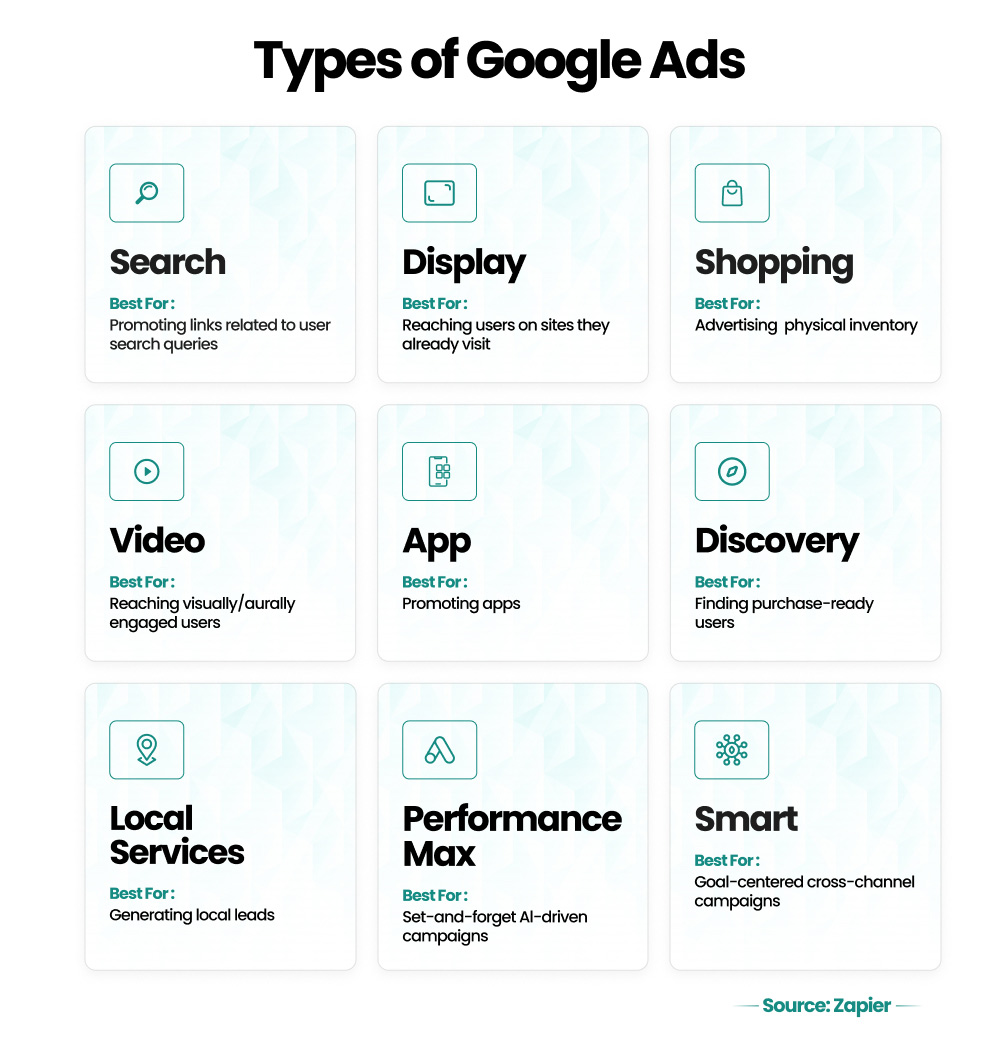
1. Effectively Choose, Group, and Organize Your Keywords
Organizing your keywords is like laying the groundwork for a solid structure.
By choosing and grouping them effectively, you set the stage for increased relevance and visibility, ensuring that your ads reach the right target audience.
However, to make sure you’re doing it right, first, you need to pay attention to the following tips-
Understand The Different Types of Keywords in Google Ads Campaigns
Broad Match Keywords
These are general terms that may bring in a wide range of search queries. While they can capture a larger audience, be cautious as they may attract less relevant traffic.
Phrase Match Keywords
These keywords target specific phrases, offering a balance between broad and exact match types. They provide a more targeted approach, capturing users searching for specific expressions.
Exact Match Keywords
These keywords are highly specific and target exact search queries. They provide the most precise targeting but may have a lower search volume.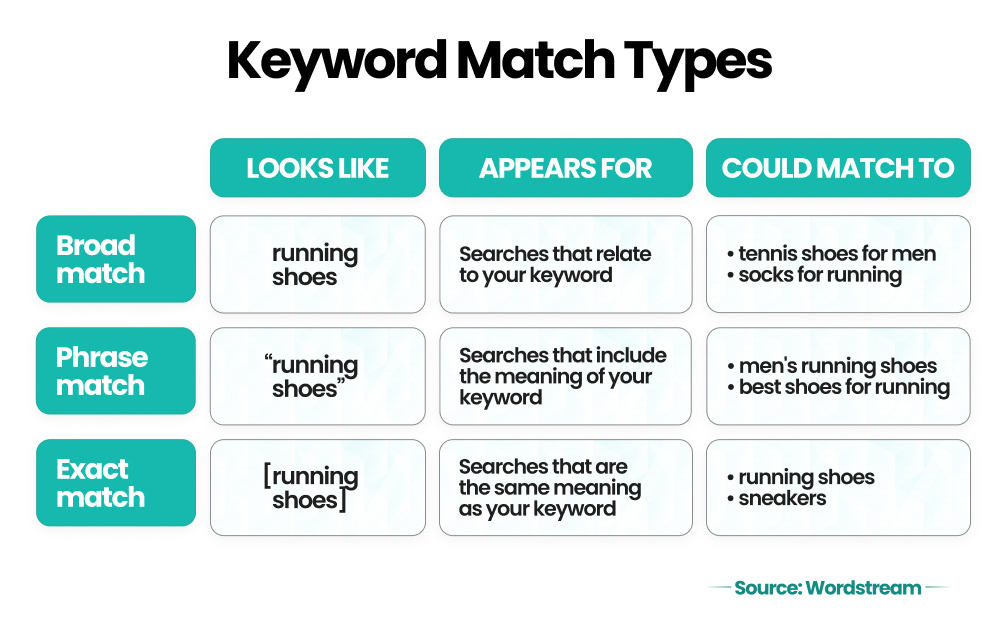
Also Read: How to Create a Successful PPC Campaign Strategy to Captivate Your Audience
Group Keywords by Themes
Create Themes or Categories
Group keywords based on common themes or topics. For example, if you’re a shoe retailer, group keywords related to running shoes separately from those related to casual shoes.
Use Ad Groups for Organization
Assign each keyword group to a dedicated ad group within your ad campaign. This helps maintain a clear structure and ensures that your ad copy is closely aligned with the grouped keywords.
Choose the Right Keywords
Focus on Relevance
Select keywords that are directly relevant to your products or services. Avoid overly broad terms that might attract clicks from users with different intentions.
Consider User Intent
Understand the intent behind different keywords. Choose keywords that align with the stage of the customer journey, whether it’s awareness, consideration, or the decision-making phase.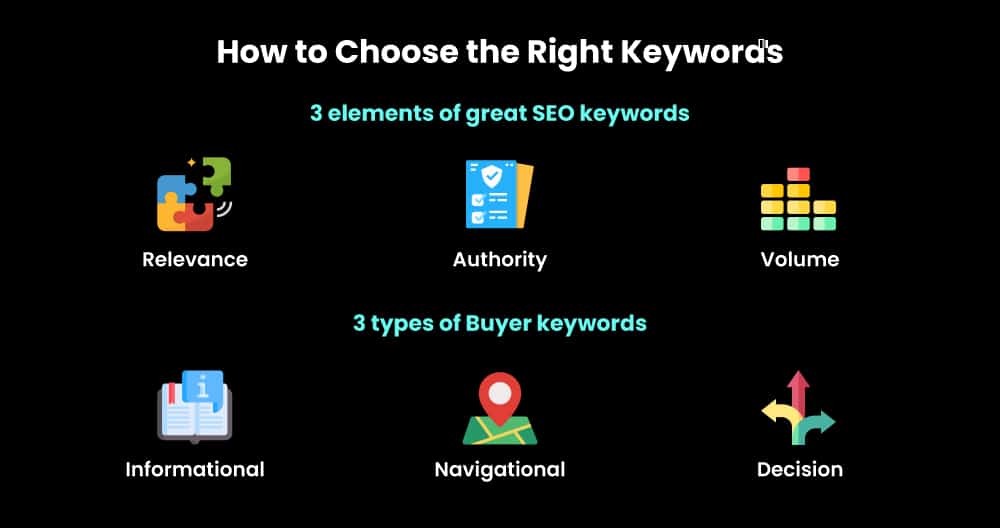
Avoid Keyword Overload
Quality Over Quantity
Remember what matters is having the right keywords instead of having too many. Aim for a manageable number of highly relevant keywords to maintain a targeted and effective ad campaign.
Regularly Review and Refine
Periodically review your keyword performance and refine your list. Remove underperforming or irrelevant keywords and add new ones based on evolving trends or user behavior.
Use Negative Keywords
Identify Irrelevant Terms
Excluding specific terms that are not related to your offering refines your target audience and prevents your ads from showing up in irrelevant searches.
This helps you focus your budget on users that are more likely to convert.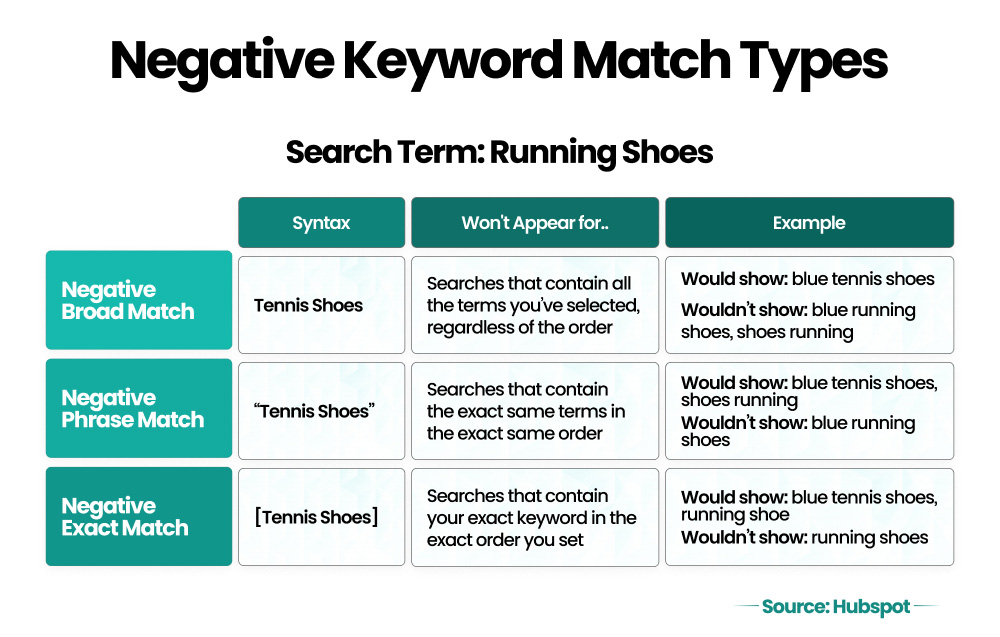
2. Implement Retargeting Ad Campaigns
Retargeting is one of the most effective remarketing techniques that allows you to re-engage users who have interacted with your ads or website but left without taking further action.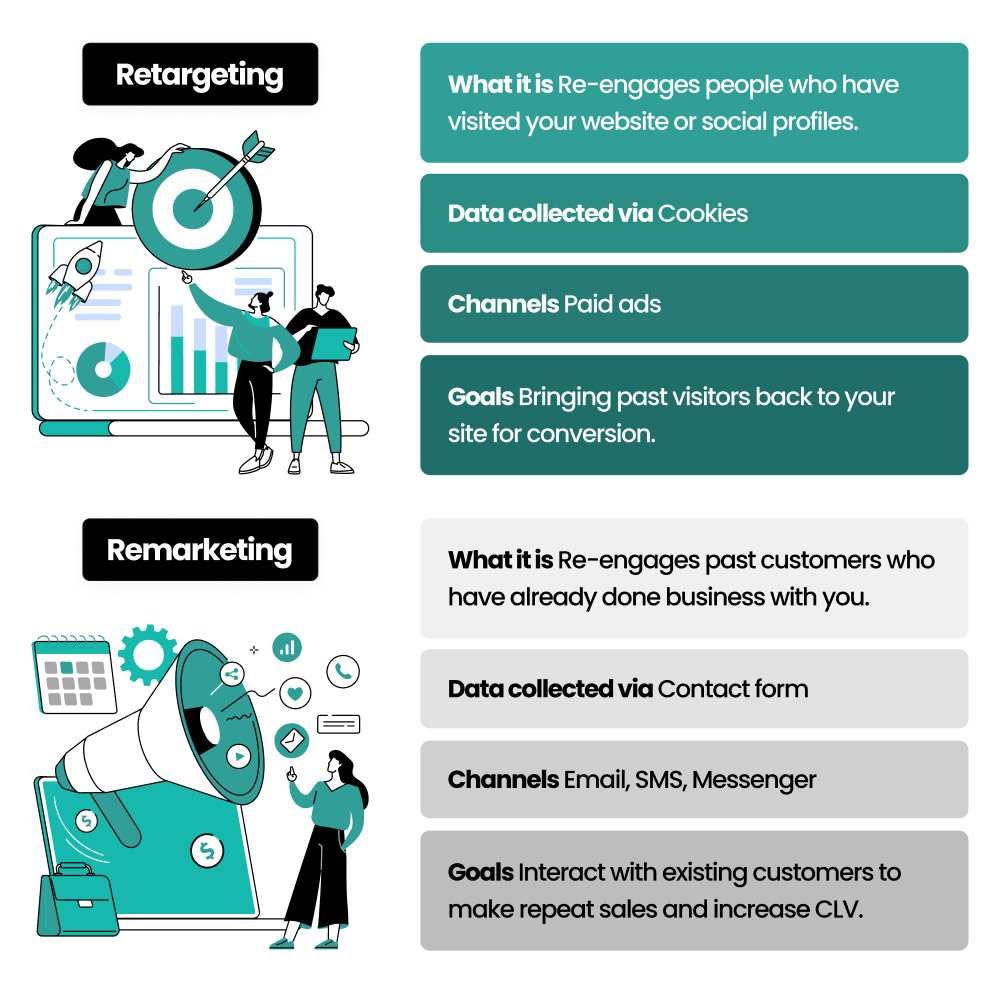 Therefore, to optimize your ad campaigns, here are some tips on how you can best utilize retargeting techniques to improve your conversions:
Therefore, to optimize your ad campaigns, here are some tips on how you can best utilize retargeting techniques to improve your conversions:
Created Segmented Audience Lists
Divide your target audience into segments based on their behavior. Create segments for users who visited specific product pages, those who abandoned carts, or those who spent time on certain sections of your website. This segmentation allows for more targeted and relevant ad campaigns.
Create Tailored Messaging
Utilize user behavior insights to create personalized and targeted ad messaging. Highlight products or services that users have shown interest in, and address any concerns or objections they may have had during their previous interactions.
Suggested Read: What is Paid Media – Types, Benefits, Best Practices and Examples
Implement Dynamic Ads
Dynamic ads automatically adjust content based on user’s previous interactions, showcasing products or services they’ve viewed. This dynamic approach keeps your ads fresh and directly relevant to individual users.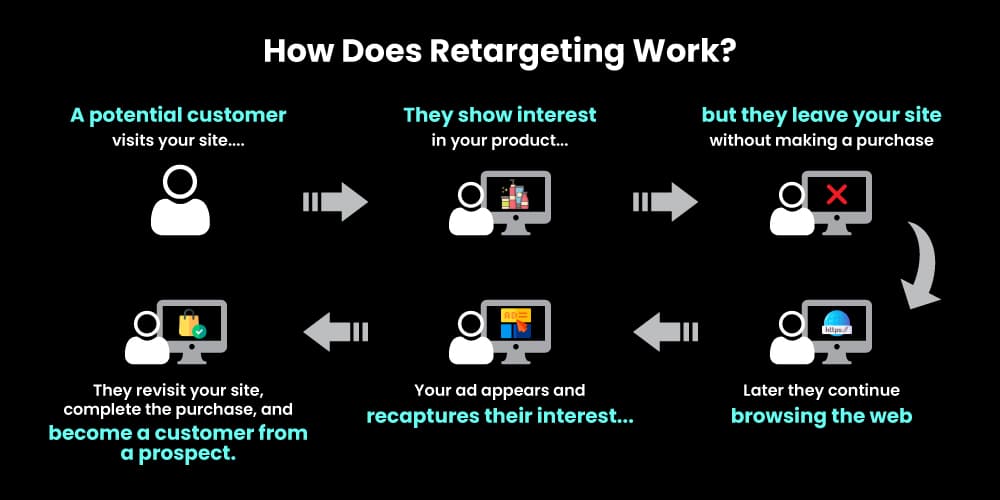
Optimize Ad Frequency
Be strategic in how often users see your ads. While consistent visibility is important, avoid overwhelming users with excessive ad frequency. Optimize the ad frequency to stay top-of-mind without causing ad fatigue.
Suggested Read: Banner Advertising: What It Is and How It Works [With 11 Real Examples]
Encourage Completing Conversions
Use retargeting to encourage users to complete desired actions, such as making a purchase or filling out a form. Create compelling calls-to-action that guide users toward the next step in the conversion funnel.
Utilize Exclusion Lists
Implement exclusion lists to avoid showing ads to users who have already converted. This prevents unnecessary ad spend on audiences that have already taken the desired actions, allowing you to focus on attracting new or untapped audience segments.
Adjust Bidding Strategies
Prioritize higher bids for audiences with stronger intent, such as those who have abandoned carts or engaged more extensively with your content.
By focusing on these streamlined ad optimization tips, you can effectively leverage retargeting to create more personalized and effective ad campaigns, driving better conversion results.
3. Optimize Your Ad Campaign Delivery Based On Time of Day, Device, and Location
Understanding when and where your audience is most active allows you to maximize your ad campaign’s impact.
Analyze Peak Engagement Times
Identify the times of day when your target audience is most active online. Use analytics tools to analyze historical data and determine the peak engagement periods. Adjust your ad campaign schedule to maximize visibility during these high-traffic hours.
Moreover, if your product or service has time-sensitive relevance, you can implement dayparting strategies to align your ad delivery with specific times of the day. For example, if you run a restaurant, adjust ad delivery to coincide with meal times.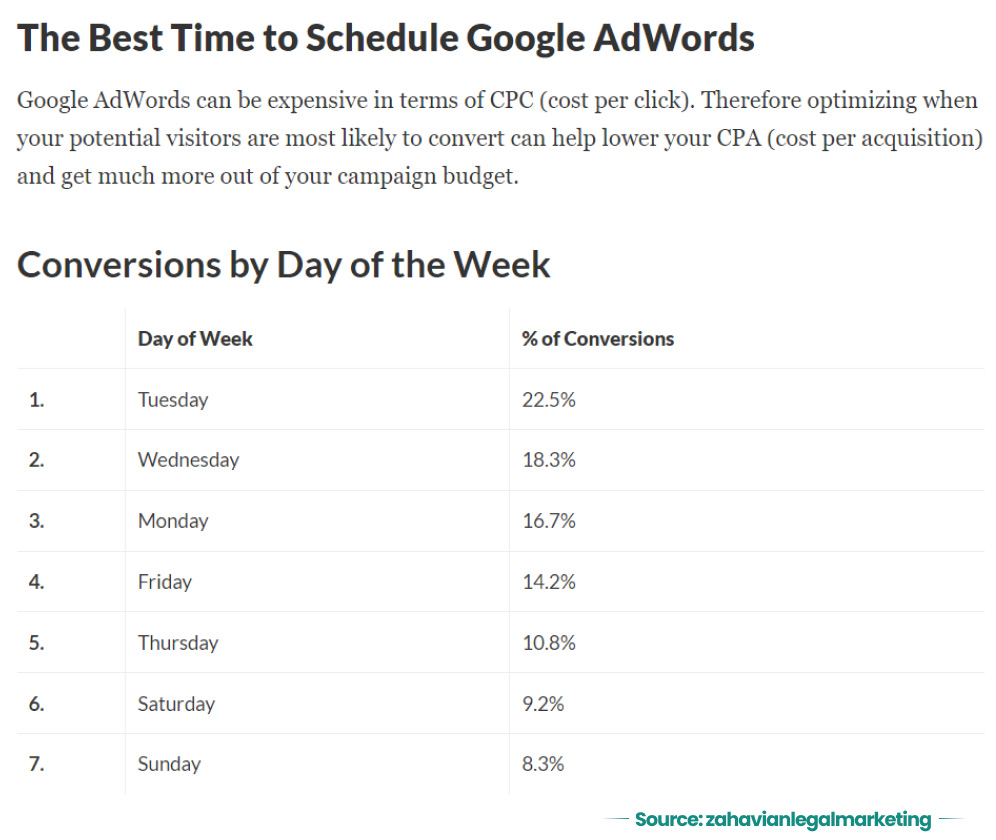
Tailor Delivery by Device
Understand how your audience interacts with your ads on different devices. For example, if you didn’t know paid ads can be five times more effective on mobile devices than on desktop computers. So, consider creating device-specific campaigns or adjusting bid adjustments for specific devices.
Tailoring your approach based on the device can improve both the user experience and the performance of your ad campaign.
Geo-Target Strategically
Leverage location-based targeting to reach users in specific geographical areas. Adjust bid adjustments or create location-specific ad variations to maximize relevance.
By implementing these tips, you can optimize your ad campaign delivery to target the right audience, at the right time, on the right device, and in the right location.
This strategic approach enhances the efficiency of your ad spend and increases the likelihood of capturing user attention when it matters most.
4. Utilize Ad Extensions
Providing additional information about your product or service encourages users to engage with your ad and boosts the overall effectiveness of your ad campaign.
Therefore, by incorporating different ad extensions in your ad campaign, you can increase both the ad visibility and the likelihood of conversions.
Below, I’m sharing the list of different types of ad extensions that you can utilize to optimize your ads.
Types of Ad Extensions
- Sitelink extensions
- Call extensions
- Location extensions
- Callout extensions
- Seller rating extensions
- Lead form extensions
- Price extensions
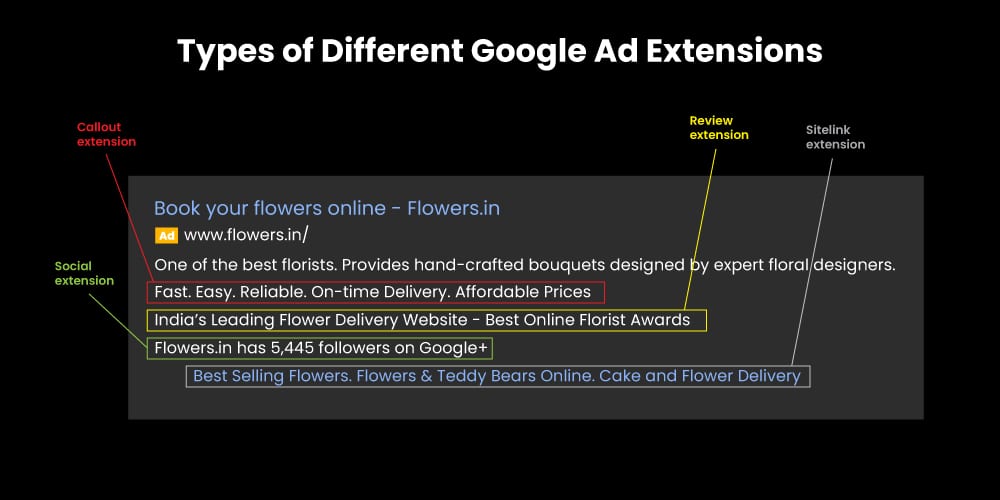 Effectively utilizing ad extensions can significantly improve the performance of your ads. Here are some tips for each type of ad extension:
Effectively utilizing ad extensions can significantly improve the performance of your ads. Here are some tips for each type of ad extension:
Sitelink Extension
This is used to provide additional links to relevant pages on your website.
Ensure that the additional links provided are directly relevant to the user’s query.
Match the site links to different aspects of your business, such as product categories or services.
Use descriptive anchor text for site links that clearly communicate what users can expect when they click. This helps in setting accurate expectations and improving click-through rates.
Call Extension
This is used to display your phone number for users to call directly from the ad.
Double-check that the phone number displayed is accurate and functional. Incorrect contact information can lead to frustrated users and missed opportunities.
Use click-to-call tracking to monitor the performance of your call extensions. This can help you refine your strategy thereby improving your conversions.
Location Extension
This is used to showcase your business address and allow users to get directions.
Ensure that your business address is current and accurate. Regularly update location details, especially if you have multiple branches or if your business relocates.
Incorporate local keywords in your ad copy to complement location extensions. This can improve the relevance of your ad to users in specific geographic areas.
Callout Extension
This is used to highlight key benefits and features of your product or service.
Use them to emphasize the unique selling points of your products or services. Show what makes you better than others.
Create a sense of urgency or exclusivity. Limited-time offers or unique features can encourage users to take immediate action.
Seller Rating Extension
This is used to display your average star rating from review platforms.
Actively encourage customers to leave reviews on reputable platforms. Higher ratings not only improve the visibility but also build trust with potential customers.
If applicable, respond to customer reviews, whether positive or negative. This demonstrates your commitment to customer satisfaction and can positively impact your online reputation.
Lead Form Extension
This allows users to submit leads directly through the ad, without visiting your website.
Keep lead forms concise by asking for essential information only. Long forms can deter users from submitting their details.
Clearly communicate what users can expect after submitting a lead form. Whether it’s a follow-up email or a phone call, setting expectations enhances the user experience.
Price Extensions
This is used to showcase product or service prices directly in the ad.
If your prices are competitive, use price extensions to showcase them. Highlighting affordability can attract users looking for cost-effective options.
Ensure that the prices displayed are current and reflective of any ongoing promotions or changes in your pricing structure.
Also Read: How to Set Up Google Ads Enhanced Conversions With GTM [Just 3 Steps]
5. Improve Landing Page Experience
To optimize your ad campaigns to improve your conversions, ensure a seamless transition for users from your ad to your landing page.
To do that, you need to make sure that each element used in the landing page is in synch with each other providing a cohesive and compelling experience to the visitors.
Here’s how to do it:
Streamline and Simplify Design
The first impression of your landing page matters.
A cluttered or complex design can overwhelm visitors and lead to higher bounce rates.
So, keep it clean, organized, and visually appealing. Use a clear hierarchy with attention-grabbing headlines, concise text, and engaging images to guide visitors through the content.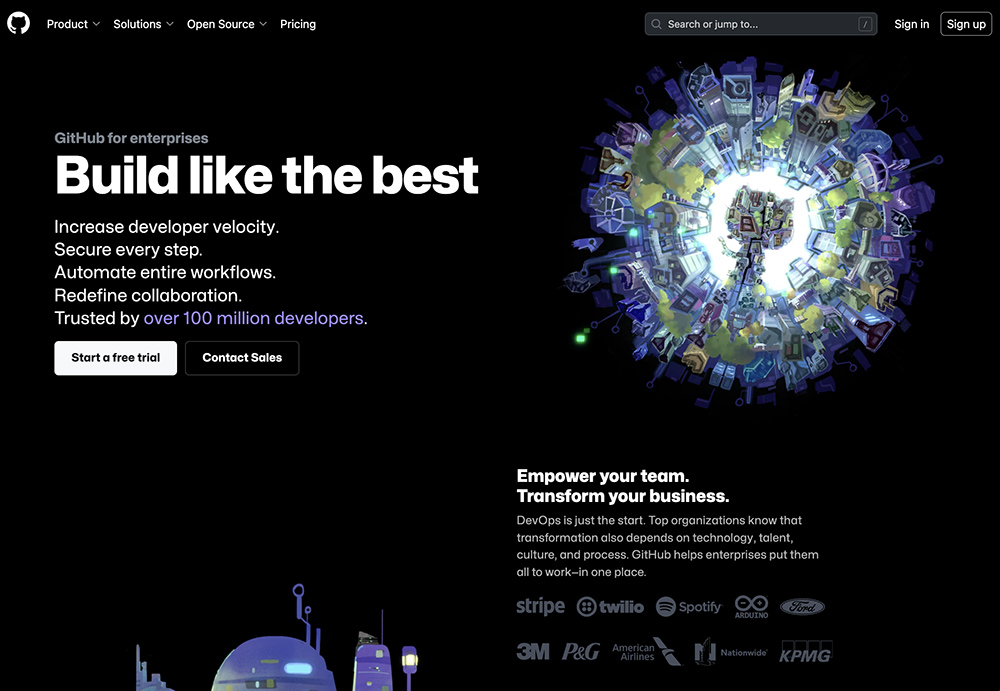
Take a look at the GitHub Landing page for example and look how it strikes a balance between visual appeal and effectiveness. By employing striking visuals, concise copy, persuasive social proof, and two distinct CTAs catering to diverse visitor needs, this landing page is optimized for conversions.
Optimize Page Load Speed
In the fast-paced digital age, slow-loading pages can frustrate visitors and discourage them from staying on your site.
So, make sure to optimize the images, minimize unnecessary scripts, and leverage browser caching to improve page load speed.
Enhance Mobile Responsiveness
With a significant portion of internet users accessing content on mobile devices, your landing page must be responsive.
Ensure that your landing page layout adapts seamlessly to different screen sizes, providing a consistent and user-friendly experience across devices.
Craft Compelling and Relevant Content
Your landing page content should be concise, compelling, and directly aligned with your ad copy.
So make sure that your landing page content clearly communicates the value proposition, benefits, and call-to-action. Use persuasive language that resonates with your target audience and addresses their needs.
Suggested Read: 5 Tips For Writing Compelling Ad Copy That Converts [With Examples]
Implement Clear and Intuitive Navigation
Guide visitors effortlessly through your landing page with efficient navigation.
Ensure that your call-to-action buttons are prominently displayed, and users can easily find the information they seek. A well-structured navigation flow reduces friction and encourages users to take the desired actions.
By following these tips, you can effectively optimize your ad campaigns and increase the likelihood of conversions, maximizing the overall impact of your digital advertising efforts.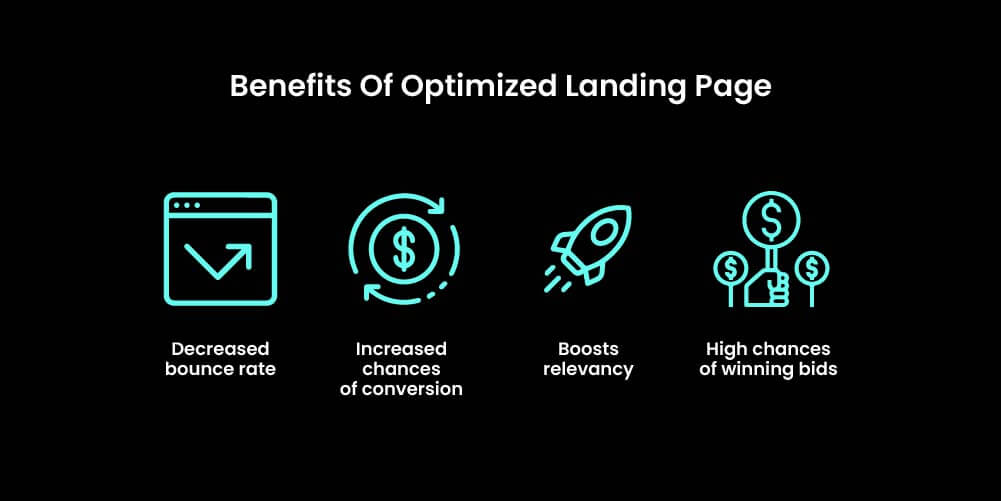
Conclusion
More than 80% of desktop searches happen on Google. So, optimizing your Google ads campaign for better conversions is not an elusive goal; it’s a strategic move.
Therefore, by incorporating these practical ad optimization tips into your advertising approach, you’re not just increasing visibility but also ensuring that every click has the potential to convert.
Remember, success in digital advertising lies in continuous refinement and adaptation.
As you implement these ad campaign optimization strategies, make sure to monitor performance metrics, and stay agile in response to evolving trends.
With a well-optimized ad campaign, you’re on the path to not just capturing attention but converting it into meaningful results for your business.
If you found this blog helpful and are looking for more ways to grow your brand, check out our other blogs here.
Until next time.
Also Read: Save Time and Money on PPC Ads With Google Ads Editor

This is a fantastic resource for anyone looking to get more out of their Google Ads campaigns! I especially liked the breakdown of the different ad extensions and how to use them effectively. Who knew a simple thing like adding your phone number to your ad could make such a big difference?
Its like you read my mind You appear to know so much about this like you wrote the book in it or something I think that you can do with a few pics to drive the message home a little bit but instead of that this is excellent blog A fantastic read Ill certainly be back